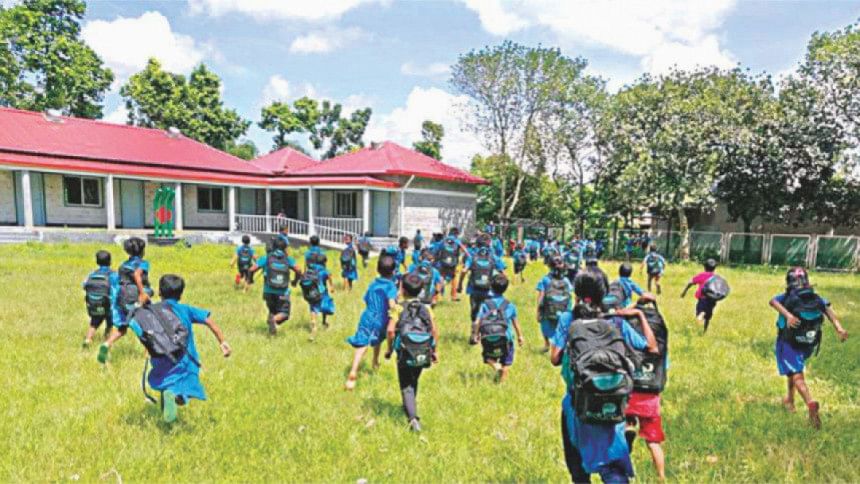7% Bangladeshi families need to borrow to send children to school: UNESCO

Around 7 percent of families in Bangladesh have to borrow to send their children to school, according to a new UNESCO report.
The UNESCO 2021/22 Global Education Monitoring Report was presented at RewirEd Forum in Dubai on December 14.
In Bangladesh, the share of urban households paying for private tuition increased from 48 percent in 2000 to 67 percent in 2010 while the corresponding share of rural households doubled from 27 percent to 54 percent; for the poorest quartile it quadrupled from 10 percent to 40 percent.
Overall, the average expenditure increased by 80 percent in real terms, according to the report.
It shows that globally one in six families saves to pay school fees, while 8 percent of families (or one in 12) in low- and middle-income countries have to borrow money to pay for their children to go to school.
In some other countries, such as Uganda, Haiti, Kenya and the Philippines, 30 percent of families have to borrow to afford their children's education.
The report calls for governments to keep their promise of providing 1 year of pre-primary and 12 years of primary and secondary education free for all.
New data show that the costs of education are falling on households disproportionately in the poorest countries.
In low- and lower-middle-income countries, households cover 39 percent of the cost of education with the government covering the remainder, compared to only 16 percent in high-income countries.
Almost two-thirds of the total cost of education is picked up by households in Bangladesh, while only one-third is covered by governments -- this is the fourth highest percentage covered by households in the world (after Haiti, Nigeria, and Liberia).
Public education still has many hidden costs. About one third of household education expenditure in low- and middle-income countries comes from households with children in public schools.
An analysis of about 100 low- and middle-income countries between 2009 and 2020 found that, on average, 3.2 percent of households' financial outgoings were being spent on education.
In Ghana, the share of education spending is not only the world's largest but also increased from 8.9 percent in 2005/06 to 13.1 percent in 2016/17.
Much of the cost comes from school uniforms and other school supplies; these accounted for almost two-fifths of the amount households were spending on education in 15 low and middle-income countries.
"We've underestimated just how much families are still paying for education when according to governments it should be free," said Manos Antoninis, Director of the Global Education Monitoring Report.
"On top of this, the impact of Covid-19 has squeezed family budgets further. Many simply can't afford to pay for school costs as a result. Governments must look closer at the amount that families are paying. They must focus on ensuring that education is free at the point of access – and that the poorest aren't priced out of a good quality education."
The GEM Report warns that, without better regulations, private education choices, such as private schools, or private supplementary tuition, are pushing up these costs for households.
RECOMMENDATIONS:
Increase efforts to guarantee free, publicly funded access to a year of pre-primary and 12 years of primary and secondary education.
Governments need to monitor out-of-pocket education spending with household income and expenditure surveys. Formal payments are often the only ones to which governments pay attention. They often turn their eyes away from other less well documented costs that increase inequality, such as private supplementary tuition. The effectiveness of policies that aim to target resources at disadvantaged learners needs to be evaluated and not assumed.
Strengthen government capacity to monitor and enforce regulations. Governments need to build a relationship of trust with non-state providers, encouraging them to register, eliminating arbitrariness in rules and communicating the right incentives for them to run their schools effectively for learners' benefit.

 For all latest news, follow The Daily Star's Google News channel.
For all latest news, follow The Daily Star's Google News channel. 



Comments